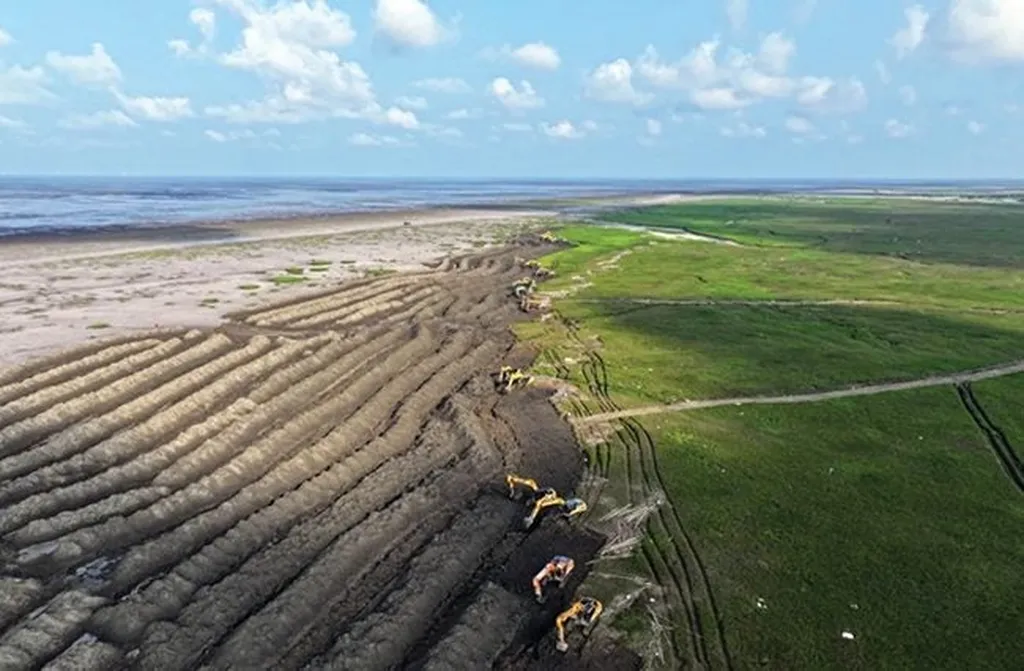In the vast coastal regions of eastern China, a persistent challenge has long plagued marine infrastructure projects: coastal saline dispersive soils (CSDSs). These soils, laden with high sodium content, are notoriously prone to erosion, threatening the stability and longevity of structures built upon them. However, a recent study led by Gang Li from the School of Civil Engineering at Sun Yat-sen University in Zhuhai, Guangdong, offers a promising solution to this enduring problem.
The study, published in *Case Studies in Construction Materials* (translated as “典型案例研究”), explores the synergistic effects of an ionic soil stabilizer (ISS) and cement in solidifying these troublesome soils. The findings could have significant implications for the energy sector, particularly in offshore wind farms, coastal power plants, and other critical infrastructure projects.
Li and his team discovered that while the independent application of ISS reduces the strength of CSDS, the combination of ISS and cement can enhance the soil’s strength by up to 41%. This synergistic effect is attributed to the ion exchange process, where calcium ions (Ca2+) from the ISS substitute the sodium ions in the soil. “The key lies in the balance,” Li explains. “Beyond 5% ISS content, the effects of magnesium (Mg2+) and aluminum (Al3+) ions diminish, and calcium ion exchange dominates.”
The study also revealed that the hydration reactions of cement play a crucial role in this process. Even a small increase in free water content, caused by the ISS, can hinder the solidification process. However, the cement’s hydration reactions effectively consume this excess free water, turning a potential hindrance into a benefit.
This research could revolutionize the way engineers approach soil stabilization in coastal areas. “The optimal combination of 5% ISS and 12% cement provides a practical solution for improving the durability of dispersive soil in marine engineering,” Li states. This could lead to more stable foundations for offshore wind turbines, reducing maintenance costs and increasing the lifespan of these renewable energy structures.
Moreover, the insights gained from this study could extend beyond the energy sector. Any infrastructure project in coastal areas, from residential buildings to industrial facilities, could benefit from this innovative approach to soil stabilization. As the world grapples with the challenges of climate change and rising sea levels, understanding and mitigating the effects of coastal erosion becomes increasingly important.
In the words of Li, “This study provides valuable insights into the mechanisms of ISS-cement synergistic solidification and offers a practical solution for improving the durability of dispersive soil in marine engineering.” With this newfound knowledge, the future of coastal construction looks a little more stable.

